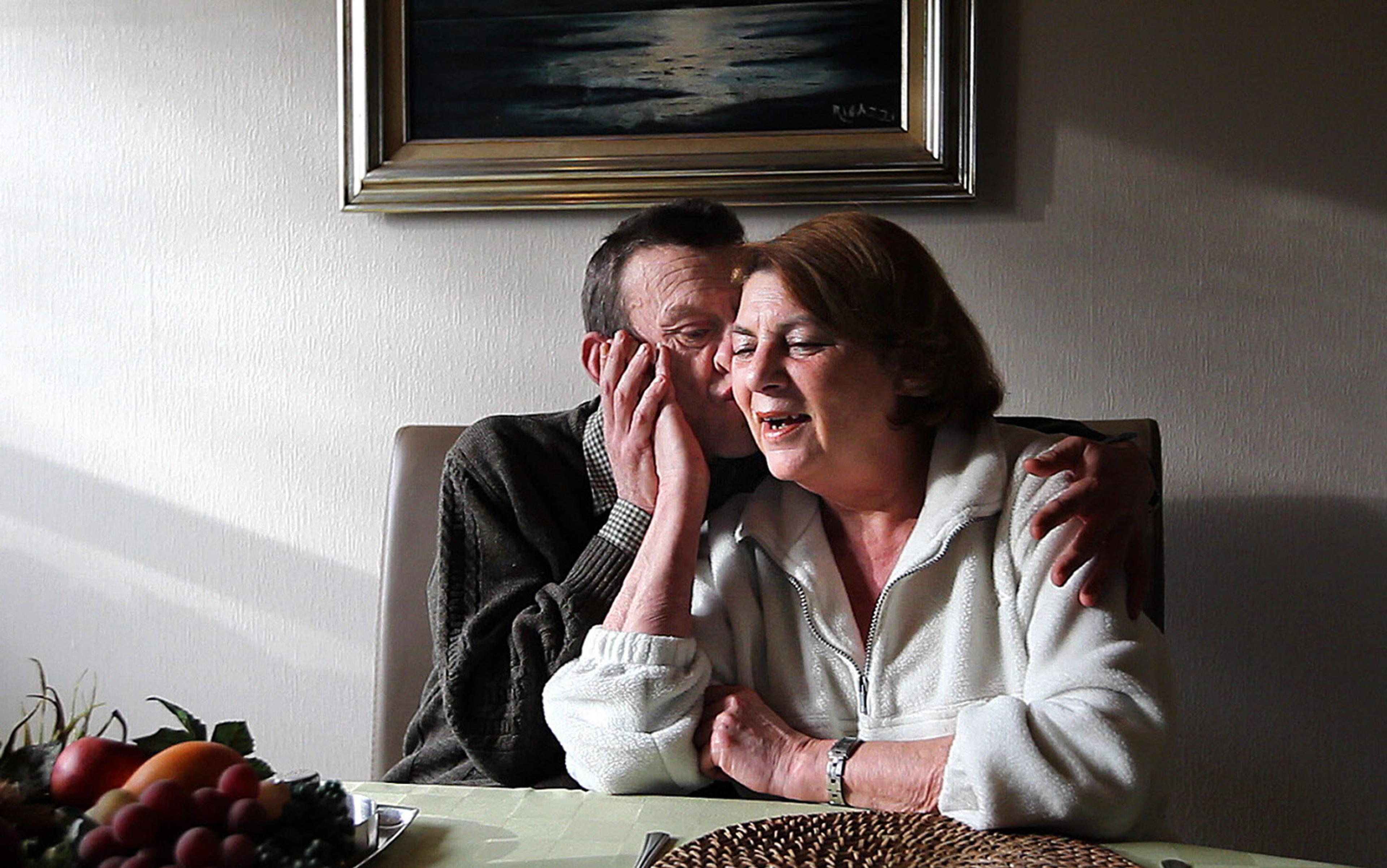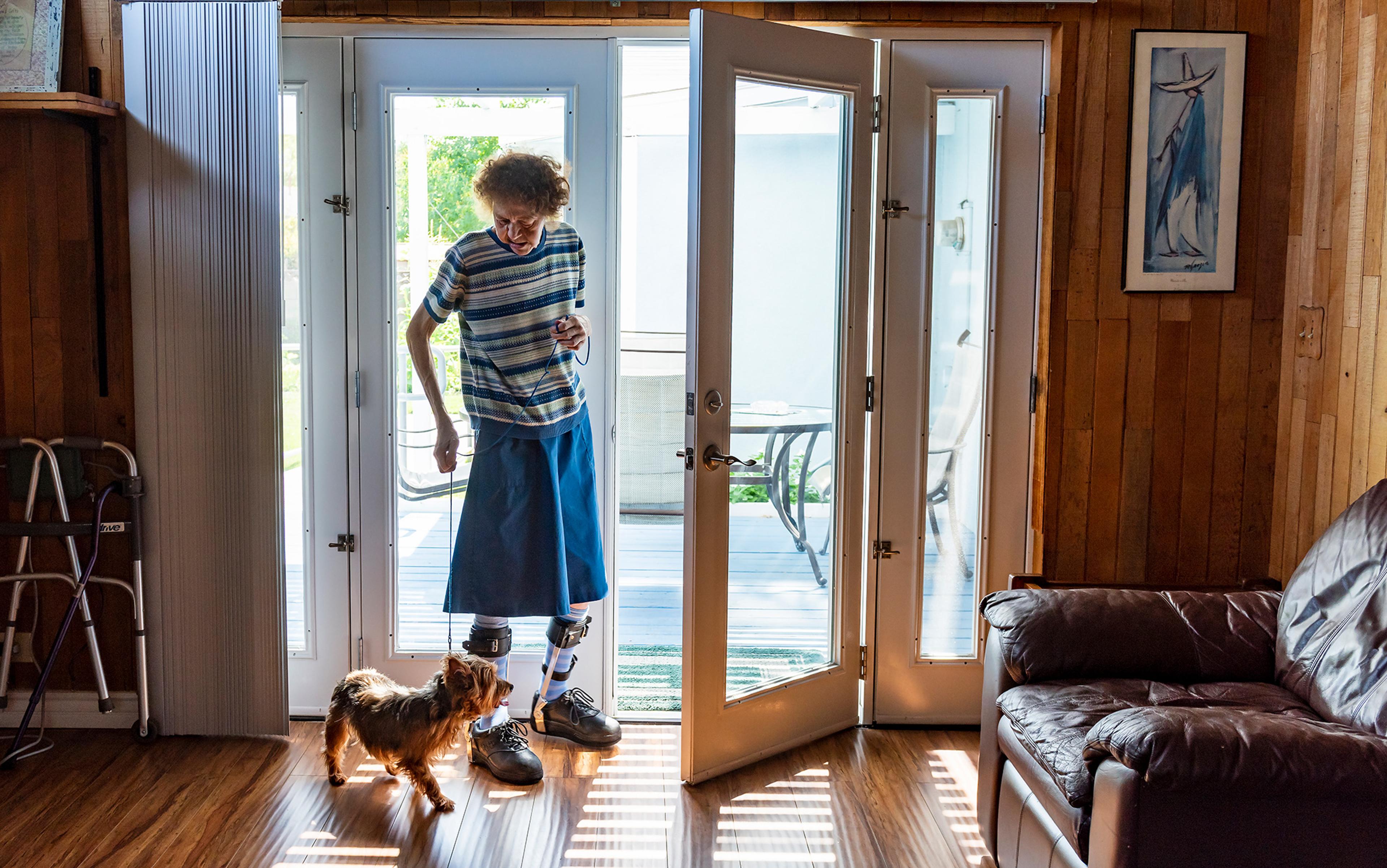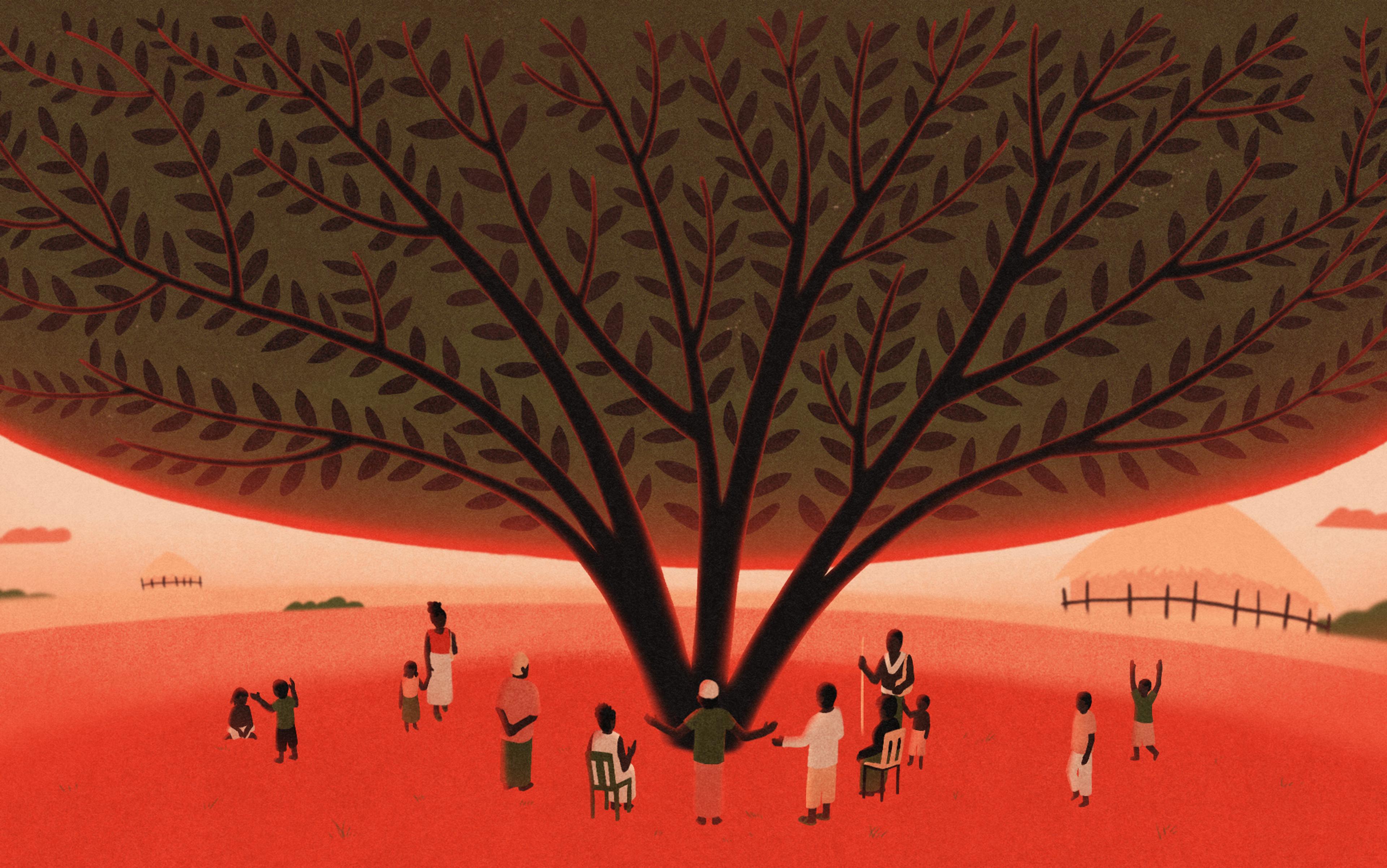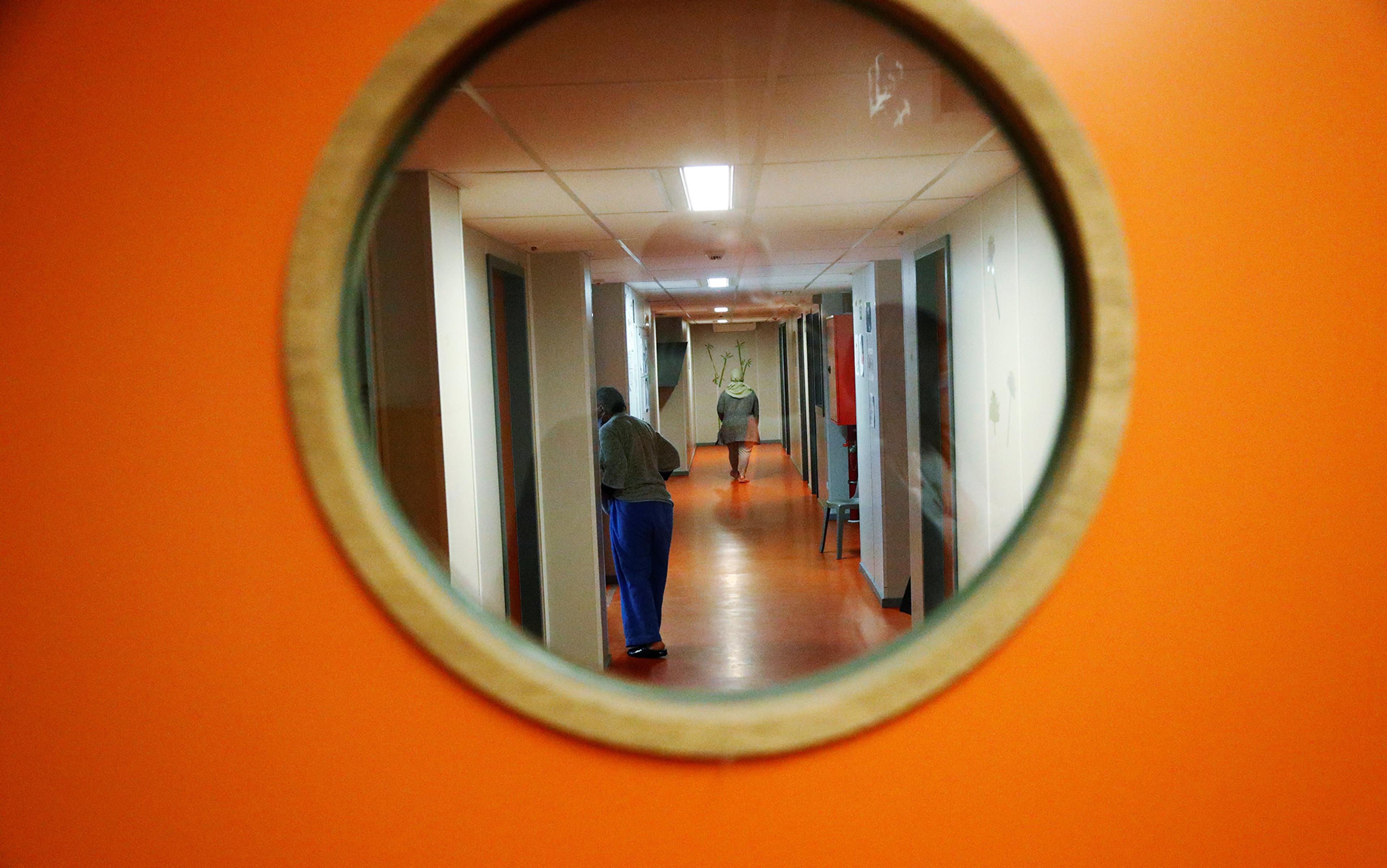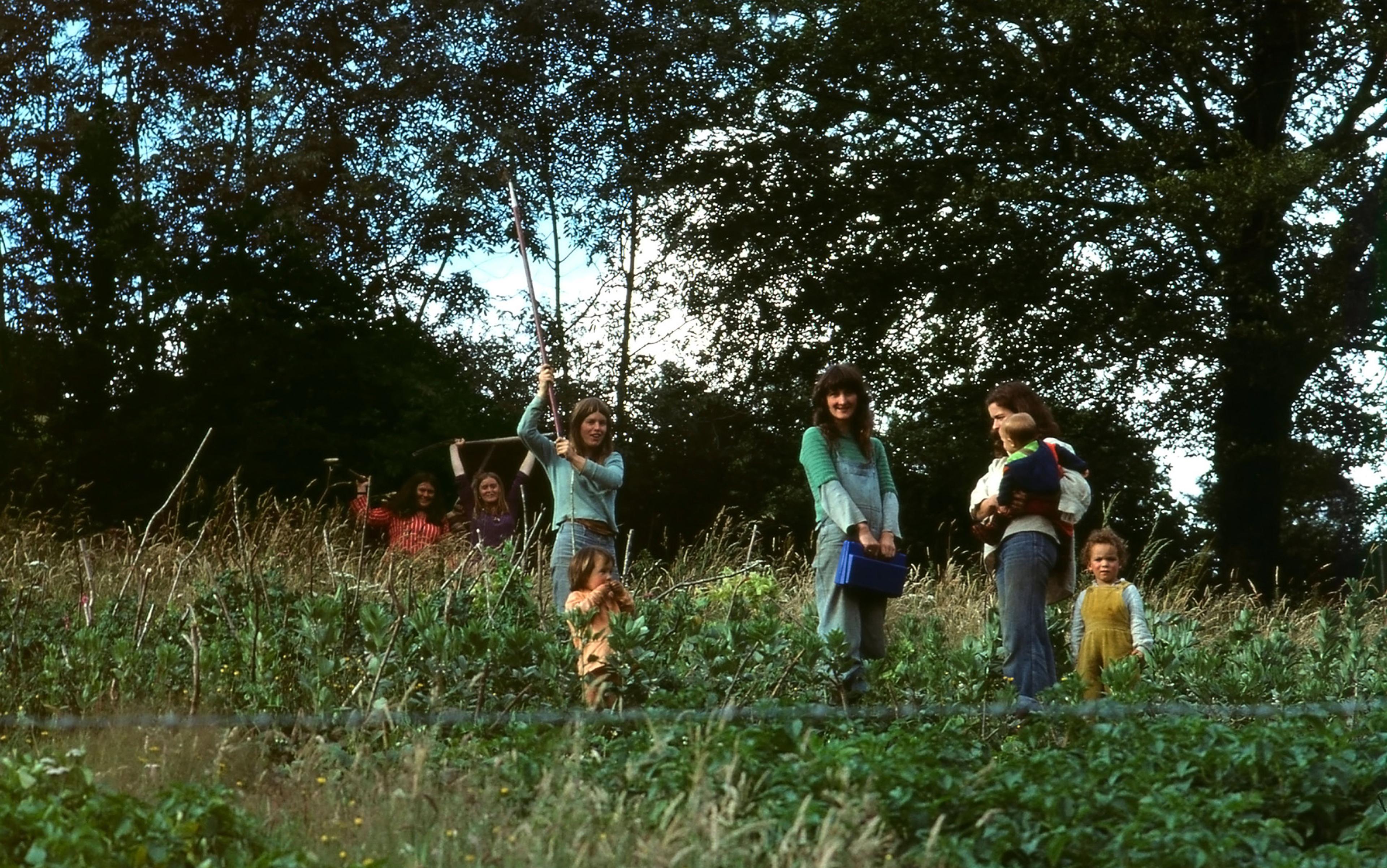Half an hour on the slow train from Antwerp, surrounded by flat, sparsely populated farmlands, Geel (pronounced, roughly, ‘Hyale’) strikes the visitor as a quiet, tidy but otherwise unremarkable Belgian market town. Yet its story is unique. For more than 700 years its inhabitants have taken the mentally ill and disabled into their homes as guests or ‘boarders’. At times, these guests have numbered in the thousands, and arrived from all over Europe. There are several hundred in residence today, sharing their lives with their host families for years, decades or even a lifetime. One boarder recently celebrated 50 years in the Flemish town, arranging a surprise party at the family home. Friends and neighbours were joined by the mayor and a full brass band.
Among the people of Geel, the term ‘mentally ill’ is never heard: even words such as ‘psychiatric’ and ‘patient’ are carefully hedged with finger-waggling and scare quotes. The family care system, as it’s known, is resolutely non-medical. When boarders meet their new families, they do so, as they always have, without a backstory or clinical diagnosis. If a word is needed to describe them, it’s often a positive one such as ‘special’, or at worst, ‘different’. This might in fact be more accurate than ‘mentally ill’, since the boarders have always included some who would today be diagnosed with learning difficulties or special needs. But the most common collective term is simply ‘boarders’, which defines them at the most pragmatic level by their social, not mental, condition. These are people who, whatever their diagnosis, have come here because they’re unable to cope on their own, and because they have no family or friends who can look after them.
The origins of the Geel story lie in the 13th century, in the martyrdom of Saint Dymphna, a legendary seventh-century Irish princess whose pagan father went mad with grief after the death of his Christian wife and demanded that Dymphna marry him. To escape the king’s incestuous passion, Dymphna fled to Europe and holed up in the marshy flatlands of Flanders. Her father finally tracked her down in Geel, and when she refused him once more, he beheaded her. Over time, she became revered as a saint with powers of intercession for the mentally afflicted, and her shrine attracted pilgrims and tales of miraculous cures.
In 1349, a church was built on the outskirts of the town around Saint Dymphna’s memorial, and in 1480 a dormitory annex was added to accommodate the growing number of pilgrims. When the stream of visitors overflowed the allotted space, townspeople started to house them in their homes, farms and stables. During the Renaissance, Geel became famous as a place of sanctuary for the mad, who arrived and stayed for reasons both spiritual and opportunistic. Some pilgrims came in hope of a cure. In other cases, it seems that families from local villages took the chance to abandon troublesome relatives whom they couldn’t afford to keep. The people of Geel absorbed them all as an act of charity and Christian piety, but also put them to work as free labour on their farms.
Today, the system continues along much the same lines. A boarder is treated as a member of the family: involved in everything, and particularly encouraged to form a strong bond with the children, a relationship that is seen as beneficial to both parties. The boarder’s conduct is expected to meet the same basic standards as everybody else’s, though it’s also understood that he or she might not have the same coping resources as others. Odd behaviour is ignored where possible, and when necessary dealt with discreetly. Those who meet these standards are ‘good’; others can be described as ‘difficult’, but never ‘bad’, ‘dumb’ or ‘crazy’. Boarders who are unable to cope on this basis will be readmitted to the hospital: this is inevitably seen as a punishment, and everyone hopes the stay ‘inside’ will be as brief as possible.
The people of Geel don’t regard any of this as therapy: it’s simply ‘family care’. But throughout the town’s long history, many both inside and outside the psychiatric profession have wondered whether this is not only a form of therapy in itself, but perhaps the best form there is. However we might categorise or diagnose their conditions, and whatever we believe their cause to be — whether genetics or childhood trauma or brain chemistry or modern society — the ‘mentally ill’ are in practice those who have fallen through the net, who have broken the ties that bind the rest of us in our social contract, who are no longer able to connect. If these ties can be remade so that the individual is reintegrated with the collective, doesn’t ‘family care’ amount to therapy? Even, perhaps, the closest we can approach to an actual cure?
Modern psychiatry was born in the 19th century, and for the first generation of psychiatrists, ‘the Geel question’ was central to the revolution they were attempting to bring about. For many, the system was a dismal relic of the Middle Ages, where the mad were condemned to a life of drudgery and neglect under the lax oversight of the Church. Shut away from the modern world in quasi-feudal isolation, they were denied the benefits of new medical expertise, and with it, any chance of proper treatment.
For others, however, Geel was a beacon of the progressive ideas that came to be known as ‘moral management’. Freeing the insane from their chains and madhouses, providing them with fresh air, occupational therapies and the chance to patch themselves back into normal life — this was treatment in itself. Philippe Pinel, the founding father of French psychiatry who was legendary for ‘striking the chains off the mad’ at the Salpetrière asylum in Paris, declared that ‘the farmers of Geel are arguably the most competent doctors; they are an example of what may turn out to be the only reasonable treatment of insanity and what doctors from the outset should regard as ideal’. His student Jean-Étienne Esquirol, who became the next generation’s leading reformer of mental hospitals, visited Geel in 1821 and was astonished by the sight of hundreds of lunatics wandering freely and calmly around the town and countryside. He praised the tolerance of a system where ‘the mad are elevated to the dignity of the sick’.
The ‘Geel question’ has remained at the heart of psychiatry, and the pendulum continues to swing between these polarised views. In 1850, Belgium integrated Geel into a new state dispensation that combined elements of both perspectives. Oversight of the family care system was transferred from church to government. Families got a modest state payment, in return for which they had to submit to inspection and regulation by the medical authorities. Under the church system, any crimes committed by a boarder had been the responsibility of families, who sometimes resorted to chaining and beating boarders who were violent or difficult to control. Under the new rules, however, restraint and corporal punishment were banned. And in 1861, a hospital appeared on the outskirts of town: a two-storey building with an elegant portico and large arched windows, designed in every detail to resemble a country mansion rather than a prison. Boarders, arriving now as wards of state, came here to be assessed before taking up their lodgings in town.
for most boarders, the smell of the hospital and the sight of asylum wards vanished from their lives
Medical supervision brought great improvements, but the directors of the new hospital insisted that it should supplement rather than replace the unique regime of family care. In the terminology still used by boarders and townspeople today, ‘inside’ — the world of the hospital — was a resource to use sparingly, and ‘outside’ — the wider community — was preferred wherever possible. For routine supervision, boarders were required to attend one of three bathhouses at least once a week: ostensibly for hygiene but also for more general health checks, as well as a chance for a conversation with someone outside the family sphere. The fact that these checks could be performed ‘outside’ rather than ‘inside’ meant that, for most boarders, the smell of the hospital and the sight of asylum wards vanished from their lives.
The reformed system became a source of great professional and local pride. Doctors and psychiatrists from across Europe and America came on fact-finding missions. Dozens of towns in Belgium, France and Germany established their own versions of the ‘Geel system’, some of which still survive. In 1902, the International Congress of Psychiatry officially settled the ‘Geel question’, declaring it an example of best practice to be emulated wherever possible.
Throughout the 20th century, the family care system prospered and expanded, and the town’s fame spread. With the growth of state asylums, families across Belgium faced the choice of having their relatives ‘put away’ for life in grim institutions or sending them to Geel, where handsome promotional photographs and brochures showed them working the fields, attending harvest festivals and church services, and sleeping in regularly inspected private bedrooms with cots and linen sheets. As a result, so many boarders arrived from the Netherlands that their hosts built a Protestant church in town for them. One wealthy family even took in a Polish prince, who came with his own butler and carriage.
Local jokes tended to revolve around how frequently locals and boarders were confused, and how hard it was to tell the difference
By the late 1930s, there were almost 4,000 boarders among a native population of 16,000. Across Belgium, the town became famous for its eccentricity and was often the butt of coarse humour (‘Half of Geel is crazy, and the rest is half crazy!’), but in the town itself, normal life was little affected. Local jokes tended to revolve around how frequently locals and boarders were confused, and how hard it was to tell the difference. Boarders were well aware that disruptive public behaviour might result in being sent back ‘inside’; the problem was more commonly the opposite, that they became overly timid for fear of drawing attention to themselves.
In recent decades, the ‘two-layered system’ — family care supported by a medical safety net — has been constantly recalibrated to reflect developments in psychiatry, but its most abrupt shift came in the 1970s. As the asylums emptied, mental healthcare was reconceived to become more flexible and extend further into the community. Antipsychotic and antidepressant medications, central to the new treatment model, were initially resisted by many families who felt they would turn boarders into medical outpatients, but they rapidly proved indispensable in helping to manage the worst of the depressions, crises and public incidents.
These all appear to have been changes for the better. Yet they coincided with a precipitous and perhaps terminal decline in the centuries-old system. Today, there are around 300 boarders in Geel: less than a tenth of its pre-war peak and falling fast. While many locals believe family care will endure, it has become a markedly smaller part of town life, and others suspect that this generation will be the last to maintain it. Why is this deeply rooted and universally praised system suddenly on the point of disappearing?
The limiting factor is not demand but supply. Few families are now able or willing to take on a boarder. Few now work the land or need help with manual labour; these days most are employed in the thriving business parks outside town, working for multinationals such as Estée Lauder and BP. Dual-income households and apartment-living mean that most families can no longer offer care in the old-fashioned way. People remain proud of the tradition, and credit it with giving Geel a broad-minded and tolerant ethos, one that has made it attractive to international businesses and visitors (these days it is probably best known for its annual reggae festival). But the town is no exception to the march of modernity and the irreversibly loosening social ties that come in its wake.
Modern aspirations — the increasing desire for mobility and privacy, timeshifted work schedules, and the freedom to travel — disrupt the patterns on which daily care depends. Increasing wealth is also a disincentive: most of the burden of care always fell on the poorer families, who counted on the supply of free labour and state payments to lift them above subsistence. The state now pays around €40 ($55) per day for boarders, of which only half is passed on to the families: hardly a financial incentive for most, these days.
More optimistically, the decline of the system can be seen as a reflection of modern improvements. Psychiatry has met the town halfway: the choice is no longer limited to the stark alternative of Geel or the horrors of the asylum. Care in the community, of which the town was once the leading example, has become the norm. For most mental health service users, the combination of medication and community mental health teams has made the line between ‘inside’ and ‘outside’ more porous, with ‘outside’ the preferred option for doctors and patients alike, on grounds both of cost and quality of life.
Within the family home they might still be boarders, but outside it they are now ‘patients’ or ‘clients’
The boundaries have blurred in Geel too, and the old system is hard to maintain within the institutional logic of modern mental health care. More than half of the boarders now receive some form of service, such as day care, therapy or supervised work programmes. Families come under pressure to be trained in therapy or psychiatric nursing as part of their duty of care to their boarders, but many insist that they aren’t clinicians and don’t want responsibility for medical issues such as their boarders’ drug regimes. In accordance with their patient rights, boarders are now given their own diagnoses and they are free to share them with families or not, as they choose; either way, the inevitable effect is to medicalise their situation. Within the family home they might still be boarders, but outside it they are now ‘patients’ or ‘clients’.
When the anti-psychiatry movement emerged in the 1960s and ’70s, many of its proponents — like the 19th-century moral and religious reformers before them — used the story of Geel to argue that psychiatry and its institutions should have no place in the treatment of the mentally unwell, and indeed that psychiatry created many of the problems it purported to solve. But there are many clear examples in its long history of medicine’s benefits: in eliminating the use of restraints and physical punishment, in stepping into chaotic situations where families are no longer able to cope, in medication regimes that have the power to transform lives of suffering. At the same time, Geel’s story does suggest that psychiatry’s role could be limited, perhaps dramatically so: not at the centre of mental healthcare but on its periphery, as a backstop to the community. In an ideal world, might not the modern psychiatric clinic shrink back towards the size of the 19th-century hospital: a discreet ‘inside’, as remote from the majority of patients’ lives as possible?
Yet this would demand a reform not simply of medicine but of society itself. It’s ironic but probably not coincidental that the need for a community response to mental illness is becoming obvious just as the structures that might provide it are failing. The boarder who celebrated 50 years in residence is by no means exceptional: another, recently deceased at the age of 100, had spent 80 years with the same family, in the care of successive generations to whom she had been first like a daughter, then a sister and finally an aunt. Who would not wish to live in a community where such extraordinary resources of time, attention and love were available to those who needed them — but who these days can imagine being in a position to offer them?
This is, in yet another form, the tragedy of the commons: our liberation as individuals to create lives of our own choosing places unsustainable pressures on the type of society that most of us would choose to live in. We might define mental ill-health in medical terms, but this is not enough to confine its treatment within the medical frame. If it is in practice a condition that has exhausted the capacity of the individual and the social support available, it’s bound to manifest more intensely in an atomised society where insoluble problems devolve onto the sufferer alone. To take up these problems on behalf of others demands, all too often, more than their own loved ones can give or the state can provide. As mental illness proliferates and outpaces the psychiatric resources available to manage it, Geel’s story offers a vision, in equal parts sobering and inspiring, of what the alternative might look like.
